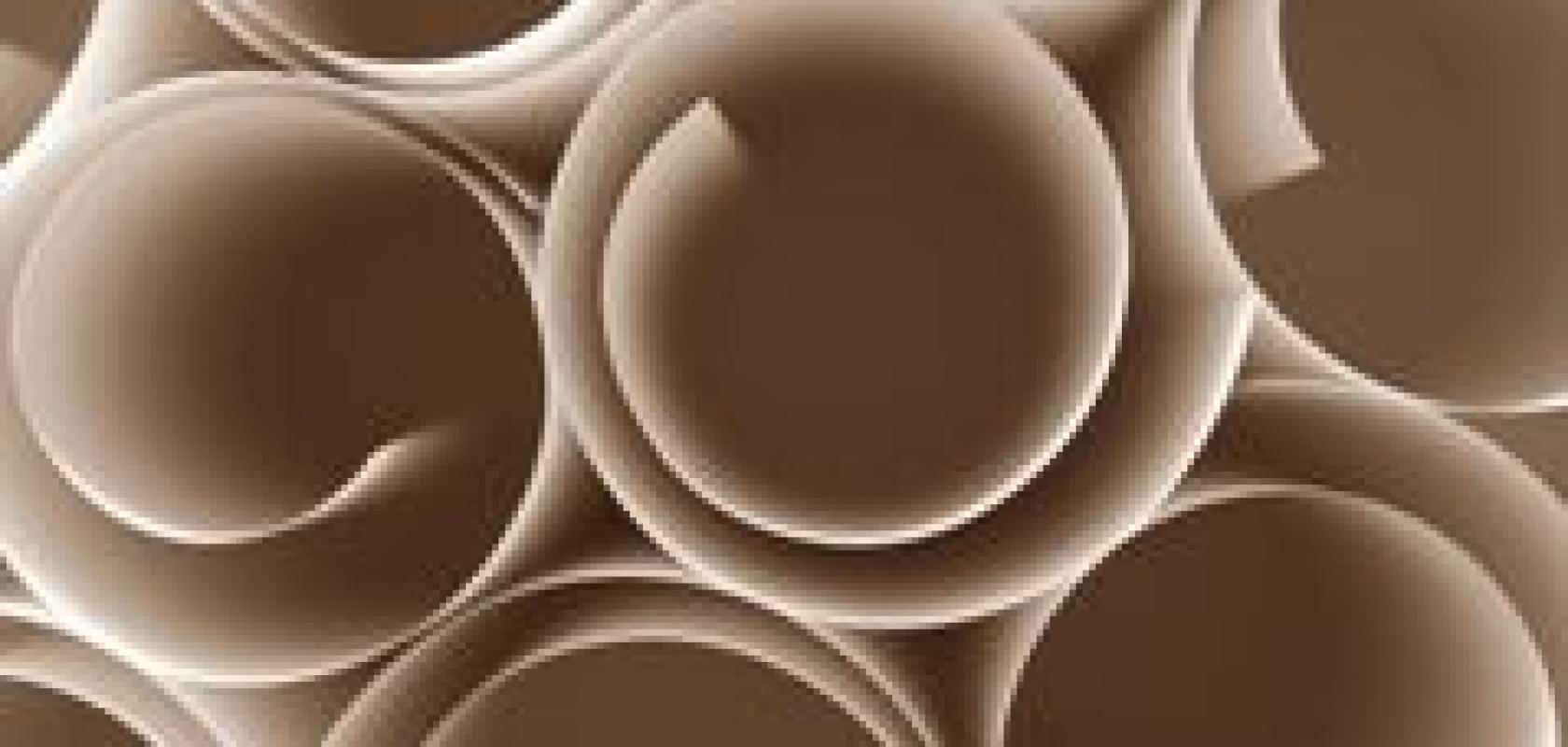Natural and synthetic materials like timber and textiles are challenging for vision systems because they have uneven complex surfaces whose qualities are computationally difficult to determine.
Getting good data is necessary to aid the computation for accurate results. A number of field proven machine vision hardware and software solutions are available to provide good surface inspection of natural material, like paper, timber and textiles.
Light stripe scanning has proved to be a reliable, well-known technique for generating a 3D scan of a surface because of the high accuracy that can be achieved at a low cost and good level of robustness. Aqsense’s SAL3D’s Peak Detector tool can detect light stripes such as those from lasers.
In order to detect small flaws on a natural surface such as paper, a high scanning resolution is required and laser light stripe scanning can deliver that. There are two issues to be considered to ensure adequate scanning and data collection is achieved. One is the pixel resolution of the camera, especially along the stripe line, and, two, the actual scanning resolution, which is the distance between successive stripe images captured. A resolution about 10 times higher than the smallest defect the system has to detect is a standard requirement for delivering adequate results.
To achieve the minimum size defect detection and relevant scanning speed, the right light source needs to be chosen. The smaller the defect size, the thinner the light stripe must be, but the stripe width should also be visible. This means the stripe width should be at least three to five pixels wide to guarantee a good degree of sub-pixel detection and defect shape reproducibility.
Because of these lighting requirements laser light is the most used option, reinforced by its relatively affordable cost compared to other options. However, super-luminescent LEDs and related optics technologies are quickly improving and could be an option in the future.
With such a stripe width, SAL3D can provide an estimation of the maximum intensity point coordinate with sub-pixel accuracy. It is not affected by noise or intensity unevenness as it does not rely on any weighted averaging, unlike the centre of gravity method.
‘You can use it to inspect the surface. We are preparing a new product called 3D Express that will interface with the system to analyse and acquire with 3D data without any programming,’ Dr Carlos Matabosch, Aqsense’s technical director says. ‘It’s a wizard you can configure with cameras and lasers, parameters for correct calibration, and can use it to get 3D images from different cameras and you can export the images in 2D format to 2D libraries.’
When capturing the light stripe, good contrast is also needed to separate the stripe from the background. However, increasing contrast will lead to saturation in the image. Choosing cameras with high dynamic range sensors will decrease the saturation, while keeping contrast at good levels.
The use of laser light introduces speckle noise, which is a spatial noise, as opposed to the camera’s temporal noise. Speckle appears because of the laser coherence and the scanned surface roughness that you get with natural materials. When the surface roughness is bigger than the laser wavelength, then constructive and destructive interference phenomena appear in the form of bright and dark spots within the laser illuminated area. Since it’s a spatial noise, it is hard or even impossible to minimise it by software techniques.
There are now reduced speckle lasers that can significantly overcome this problem. Affordable optical devices that are attached to normal lasers and reduce speckle are also available. They will work with lasers with an output power of up to 2-3W. Unfortunately these devices are also dependent on the laser wavelength. Laser scanning applications for surface inspection use reduced speckle sources when tiny defects are required to be detected. However, even in the presence of speckle, SAL3D’s Peak Detector can still provide accurate scanning and detection of small defects.
Floor tiling
Belgian company Vision++ has developed a vision-based inspection system to inspect the underside of laminate flooring with the help of Matrox Imaging. The inspection system is for quality control. This involves verifying the dimensions and geometric features of the floor tiles, such as straightness of edges and the right angles of the corners. This quality control is important to Vision++ because any dimensional or geometrical offsets will produce gaps or mechanical stress in the finished floor.

Laser triangulation now offers excellent scanning resolution and speed for inspecting natural materials like paper and textiles. Credit: Aqsense
The Vision++ visual inspection machine will select and configure the camera triggering and synchronisation, and will transmit the resulting data using special purpose quality control software, which will log production statistics and help with the removal of defective products.
In the factory, as the floor tiles move down the production line, images are taken from a conveyor belt at a nominal speed of 20m/s, but the speed can be as high as 40m/s. The required object resolution for inspection is 40 x 40μm on the object surface per pixel. The images are taken by a line scan camera from Tichawa. The camera has the following features: a built-in, synchronised LED lighting; a sensor size of 260mm; a sensor resolution of 600dpi; a scan rate maximum of 18kHz; and a Camera Link data interface.
To achieve these data rates, a Matrox Imaging Solios eV-CL frame grabber was used. The frame grabber buffers the incoming image data, and sends it on to the software application running on a PC. Vision++ also used the API provided by Matrox to access the image data. Matrox also created a digital configuration file (DCF) to connect the Tichawa CIS camera to the frame grabber. This DCF-file contains all parameters to achieve good data transmission. Vision++ therefore attains stable image data and achieves high resolution imaging of a fast moving product.
Some natural materials represent a very different challenge. Instead of a surface that is simply complex in its geometry, a diamond’s surfaces can be obscured by reflection from its other surfaces. Using an imaging spectrophotometer, called the Brilliance Scope Analyzer, GemEx, a company specialising in analysing diamonds, is able to capture an image of a diamond from six different lighting angles.
GemEx required a camera with a fast frame rate and an easy-to-use interface in the Brilliance Scope instrument. It selected Lumenera’s Lu130 industrial camera with a USB 2.0 digital interface. The Lu130 has a small form factor and performance superior to what is needed to produce clear images of diamonds in challenging lighting conditions. Prior to Lumenera’s Lu130 camera, GemEx used a digital camera that required ISA slots to connect with the computer.
‘The Lu130 has been consistently reliable in some very challenging environments,’ says Randall Wagner, CEO and founder of GemEx Systems. ‘The Brilliance Scope instruments are placed in many locations that have varying environments, lighting, and power conditions and Lumenera’s cameras have always performed exceptionally well.’
As ISA slots are becoming obsolete GemEx chose to switch to the universally accepted USB interface. If GemEx did not switch to USB they would have been forced to build custom computers at a greater cost with limited capabilities.
The images generated by the Brilliance Scope are evaluated by the amount of bright white light (brilliance) and bright colour light (fire) returned to the eye. The instrument also analyses how these lights change when the diamond is moved to determine scintillation (sparkle). These measurements are compared with thousands of other diamonds to determine their rank and performance. The monochrome camera is mounted behind a lens and an imaging band-pass filter. Multiple images at multiple wavelengths are captured, and then reconstructed into colour images.
Elsewhere, for general surface inspection, Stemmer Imaging can now offer a new automatic surface inspection system based on the Trevista image processing device. Structured diffuse illumination is combined with specialised calculation algorithms within Stemmer Imaging’s Sherlock machine vision platform to create a fast automated solution capable of identifying defects in a range of surfaces from shiny components to diffusely scattering surfaces. The process filters the image information produced to separate topography and texture into different images. For natural materials, topographic images allow defects down to a depth of just a few microns to be located and classified quickly, while texture images allow differences in brightness on the inspected component to be determined.
Surfaces are always complex whether they are natural or synthetic because no surface is perfectly flat. Sometimes a surface’s geometry has a function, sometimes it is decorative. Whatever the reason a surface is textured the way it is, industry is increasingly delivering the imaging solutions to ensure the surface meets the standards required.


